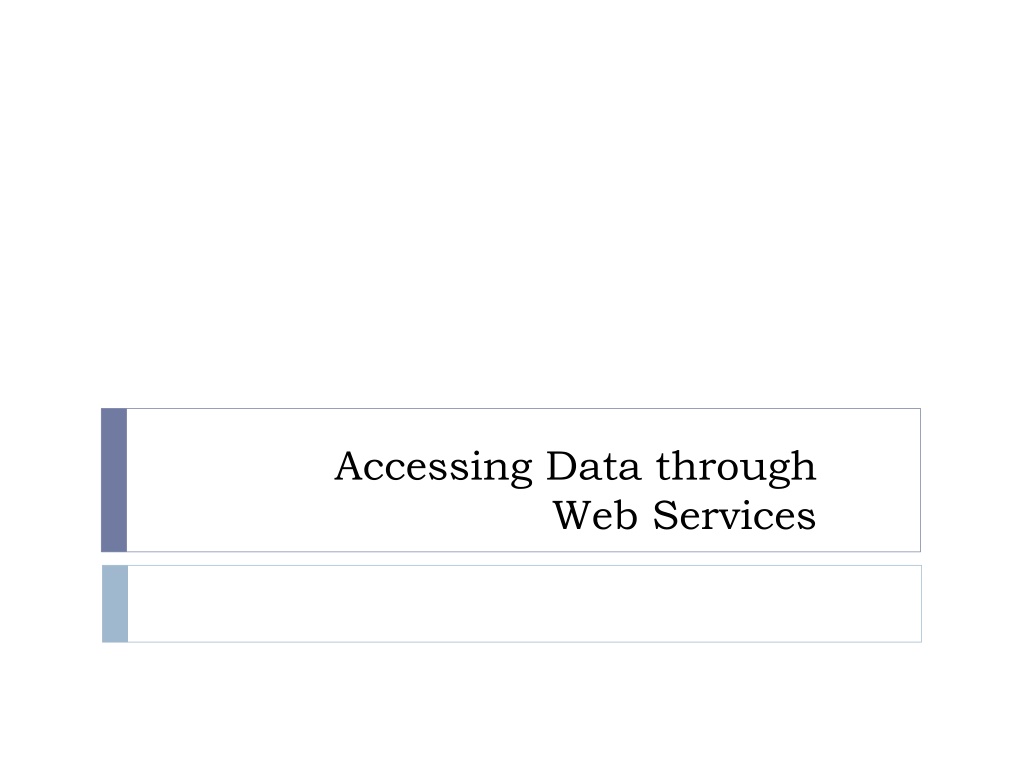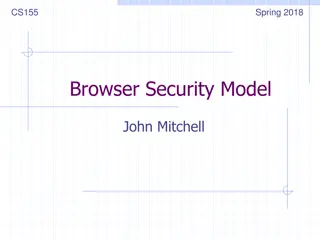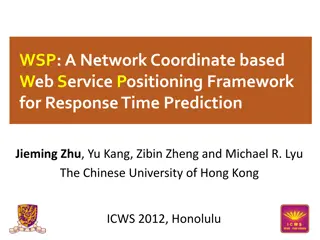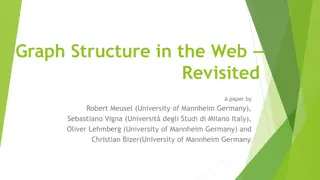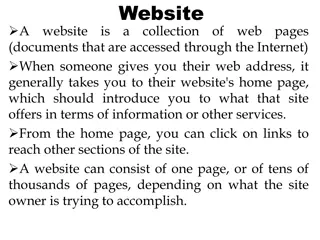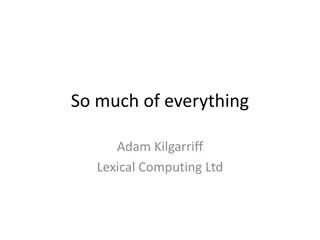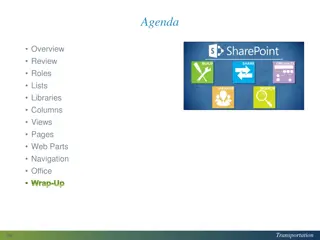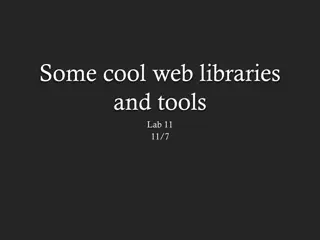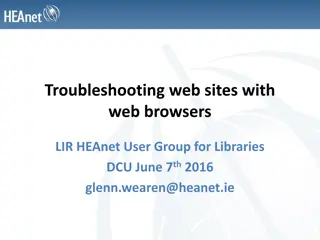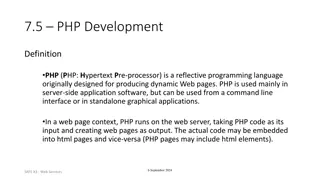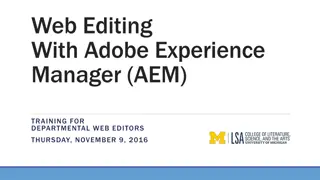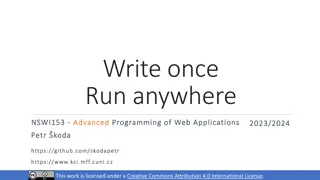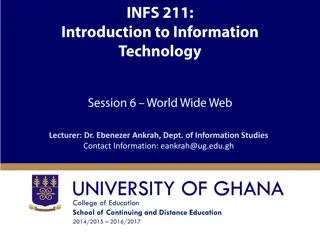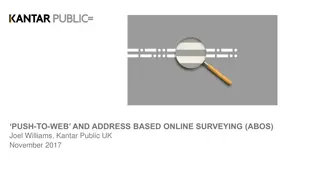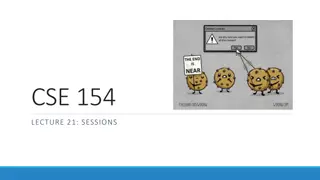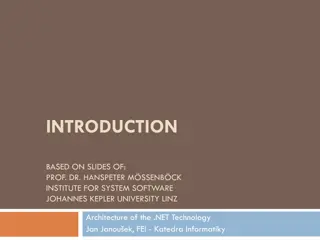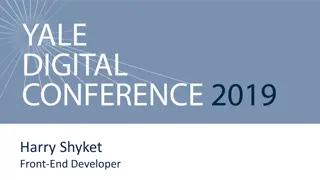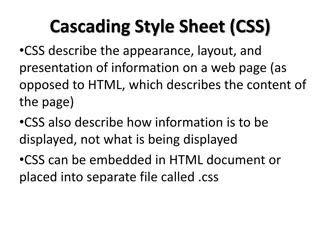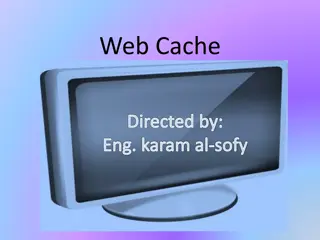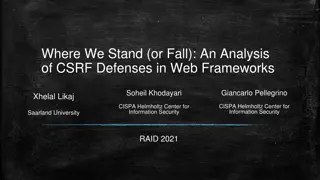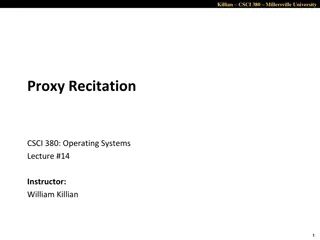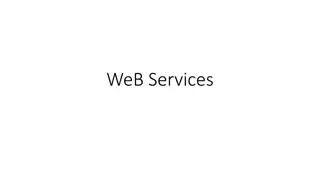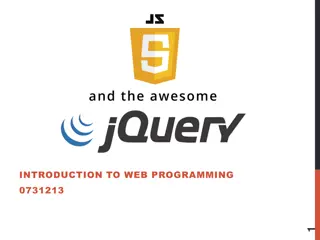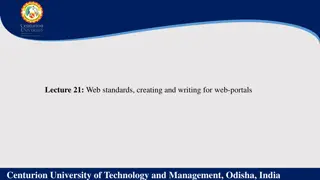Understanding Web Services: A Comprehensive Guide
Explore the world of web services, from accessing data to utilizing IRIS and FDSN services. Learn about programmatic support in various languages like Java, Perl, Python, and more. Discover how to fetch data using scripts and examples, along with performance insights on WS-dataselect.
Download Presentation

Please find below an Image/Link to download the presentation.
The content on the website is provided AS IS for your information and personal use only. It may not be sold, licensed, or shared on other websites without obtaining consent from the author. Download presentation by click this link. If you encounter any issues during the download, it is possible that the publisher has removed the file from their server.
E N D
Presentation Transcript
Accessing Data through Web Services
IRIS Services service.iris.edu IRIS web services timeseries rotation sacpz resp evalresp virtualnetwork traveltime Flinnengdahl distaz products FDSN Web services dataselect station event Documentation
IRIS Services easy to use through a variety of tools IRIS and FDSN Services Extensive documentation Builders exist to help understand URL patterns Key Links Overall IRIS Services Documentation URL Builders
Programmatic support is widespread Modern computer languages that include support for basic web services include: Java Perl Python PHP MatLab JavaScript R (e.g. Rcurl) C# C/C++ (multiple libraries)
Perl Fetch scripts: command line access http://service.iris.edu/clients/ FetchData FetchEvent FetchMetadata
FetchData options FetchData retrieves miniSEED, simple metadata, SEED RESP and/or SAC Poles and Zeros using the following selection criteria: Network, Station, Location and Channel all optional, can contain * and ? wildcards, virtual networks supported Start and end time range Geographic box or circular region Selections: command line, selection list file or BREQ_FAST file
FetchData example Request 1 hour of GSN/ANMO long-period vertical (LHZ) data and simple metadata for 2010-2-27 M8.8 Chilean earthquake: $ FetchData -N IU S ANMO L 00 C LHZ' -s 2010-02-27,06:34:00 -e 2010-02-27,07:34:00 -o /data/Chile-GSN-LHZ.mseed -m /data/Chile-GSN-LHZ.metadata Convert the miniSEED to SAC with metadata $ mseed2sac Chile-GSN-LHZ.mseed m Chile-GSN- LHZ.metadata -E '2010,058,06:34:11/-36.122/-72.898/22.9'
FetchData example results 2 minutes later 121 SAC files and a quick-n-dirty record section:
Performance WS-dataselect has been shown to be able to deliver 5 terabytes of data per day to a single remote user
FetchEvent options FetchEvent retrieves event information from ws-event and prints simple ASCII output. Events can be selected using these criteria: Start and end time range Geographic box or circular region Depth range Magnitude range and type Catalog and contributor IRIS event ID Other options: Include secondary origins (default is primary only) Order results by magnitude or time Limit to origins updated after a specific date
FetchEvent example Request events for a 20 minute period including secondary origins: $ FetchEvent -s 2010-2-27,6:30 -e 2010-2-27,6:50 -secondary
International Coordination FDSN web services are well coordinated between Europe and the US Intend to promote them elsewhere Canada, Japan, China, SE Asia Many developers producing ws aware clients ObsPy SOD jWeed WILBER 3
Vertical Integration of Seismological Data Centers FDSN federated web services dataselect for time series observations station for metadata describing the recording station event info related to earthquakes and events Fully adopted by the FDSN working groups Description of the payload (XML, text, etc) Calling convention ( parameter specifications)
Participants in Federation Europe France RESIF Germany GFZ Italy INGV Netherlands ORFEUS Data Center Switzerland ETH US IRIS DMC NCEDC
Standardization of web services Root URL: unique for each data center IRIS ORFEUS NCEDC RESIF GEOFON INGV http://service.iris.edu/fdsnws/station/1/ http://www.orfeus-eu.org/fdsnws/station/1/ http://ncedc.org/fdsnws/station/1/ http://ws.resif.fr/fdsnws/station/1/ http://geofon-open2.gfz-potsdam.de/fdsnws/station/1/ http://webservices.rm.ingv.it/fdsnws/station/1/ Query Parameters: standardized query?net=IU&sta=ANMO&loc=00&cha=BHZ&starttime=2010-02- 27T06:30:00&endtime=2010-02-27T10:30:00&nodata=404
Accessing Information from NCEDC (BK), RESIF (FR), and IRIS (IU)
IRIS Federator IRIS is developing a federating web service that will allow a user to make a request to a web service at IRIS. This service will return a set of URLs that will allow the software running on a user s computer to directly access the appropriate data center to service their request IRIS USER Federator
